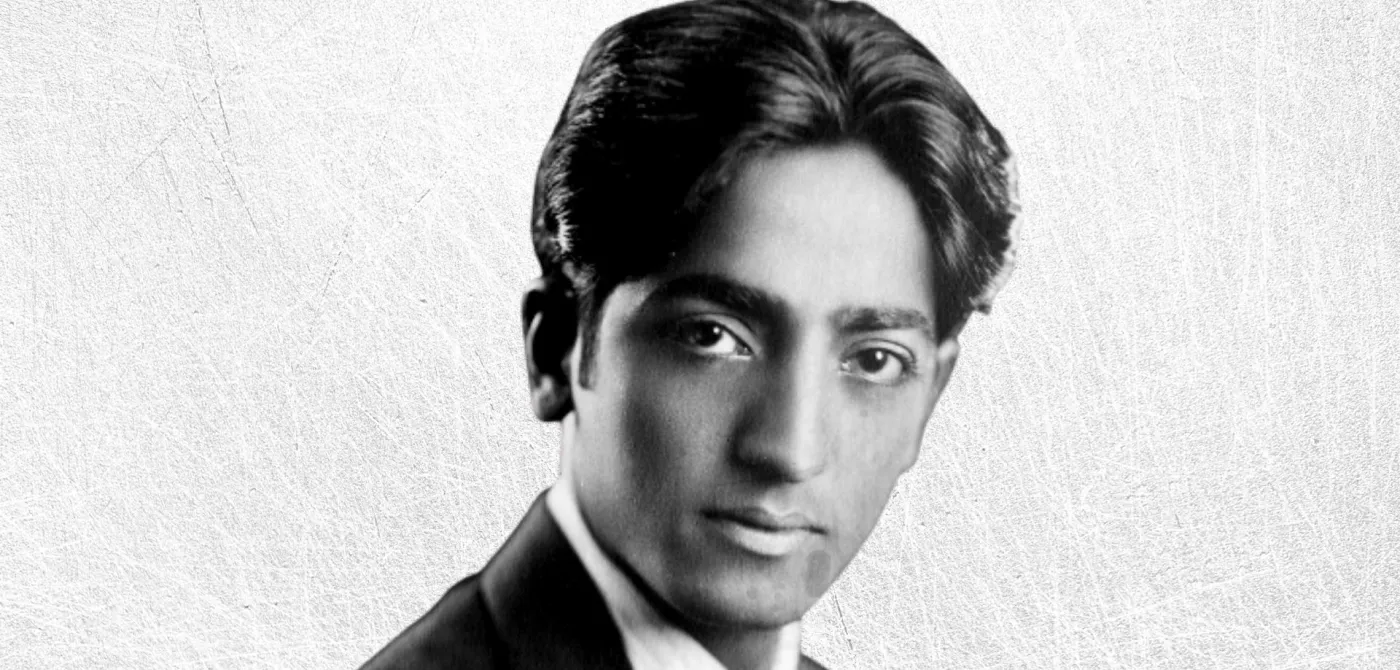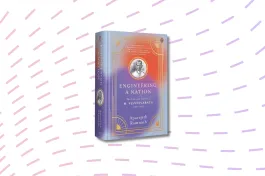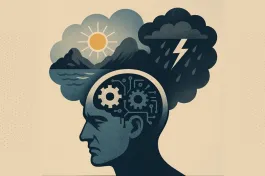When Jiddu Krishnamurti spoke, one listened. Focused on a thought, his intense eyes lost in another paradigm, Krishnamurti narrowed in on what he wanted to say. Nothing that had passed or was to follow seemed to matter. At times his right hand would be cupped like a lotus bud and Krishnamurti’s words would leap between the abstract and the tangible, the ideal and the real, the desired and the quotidian. He would hover around a word like a bee buzzing around a chosen flower, admiring it from every possible angle. He loved words, but every word had its specific location and its own moment.
I grew up in an environment where Krishnamurti loomed large. My maternal grandmother and my mother were associated with the Theosophical Society and the Krishnamurti Foundation India (KFI). I joined a KFI school in fourth grade. At school and at home, there was no forced indoctrination into becoming a Krishnamurti-ite but Krishnamurti’s questions and provocations became a part of my own preoccupations. Since he never provided answers, I realized, even as a teenager, that finding solutions and solving problems was not the intention. It was that perennial act of grappling that mattered. As long as a question or comment came from a place of seriousness, teachers never tabooed any kind of question. Students were argumentative, always pushing the boundaries of curiosity, challenging norms and truly discovering themselves and the intertwined world around.
But I have to acknowledge that, as students, we also exercised a certain kind of self-censorship. This only related to challenging Krishnamurti’s ideas directly. In the atmosphere, the tone of the discussions, and the inbuilt reverence, all of us knew that there was a line. This line moved according to the conversationist-teacher but was nevertheless a known marker.
I have never hero-worshipped Krishnamurti but he has been that voice within, the beauty being that the voice is actually mine.
Krishnamurti was not treated like a ‘Guru’; the word he disliked so much. But in some way, he had nearly become just that. When I went back to the school as a parent, I distinctly remember arguing with one teacher about referring to Krishnamurti’s words as ‘his teachings’. The baggage the word ‘teachings’ carries, I said, cannot be brushed under the carpet. The response was very un-Krishnamurti: “He (Krishnamurti) never said we should not refer to his words as teachings”.
I have never hero-worshipped Krishnamurti but he has been that voice within, the beauty being that the voice is actually mine. He is my ‘inner home’, that space within that is free and fearless. But over time the home has become an unobserved constant, only the paint, design and furniture have changed.
And now I am looking for cracks in the roof, structural irregularities. May be the home needs to be seen for what it is: a space that is also imperfect. And recognizing its anomalies does not make my home any less precious.
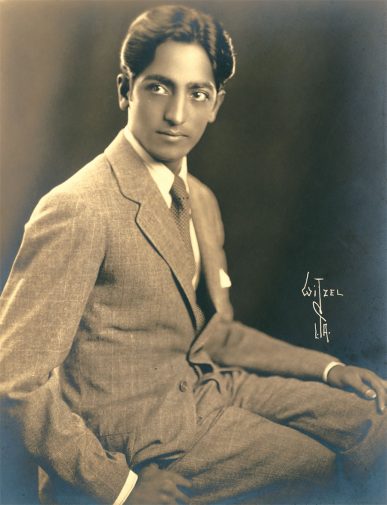
During his lectures, Krishnamurti would often call himself the ‘speaker’. In doing so, he deliberately separated ‘Krishnamurti’ from the idea that was being shared. He sought to separate the ‘self’ associated with his name, identity, past, present, and the awe and admiration from the discussion at hand. One could argue that by employing this technique, he hoped to equalize people and the conversation. The ‘speaker’ was a mind; the thoughts could have been emanating from the deep recesses of any individual present in the gathering. Krishnamurti was allowing for the possibility that each individual was meditating on the ideas and the speaker was within them — an interior resonance — not the formidable person sitting on a chair.
To my knowledge, there was never any occasion when Krishnamurti was the receiver. He never revealed any learning from the questions that were posed to him.
But this cognitive action on his part allowed for something else. It is undeniable that Krishnamurti spoke from experience, observation and reflection. All these actions are directly associated with the temporal, meaning the actual individual. Science informs us that the senses are influenced, even choreographed, from layers of experience and, consequently, perception is curated. Krishnamurti was sculpted from the real world, real learnings, listenings and interactions. And his work peeled away the veneer of impressions that clouded our minds from being able to observe, listen, receive without judgement. The pathless pathway to the land of truth. But, Krishnamurti himself was grappling with the duality of his self and the self. His realizations did not erase the collection of impressions that made Krishnamurti, and he was conscious of this conundrum. His public announcement of dissolving the ‘Order of the Star in the East’ established by Annie Besant on 3 August 1929 was a political action of the highest order. He publicly demolished the mythical, superstitious, the grandiose cult system she had built around him. In those few moments, Krishnamurti the individual shone.
Any claim of a permanent state of consciousness that allows for escapism from real world self-awareness and vulnerability is unacceptable to me. If anything, one awakens in a state of irregularity. It is in allowing this contradiction to play out that the truth dawns and glows. It is imperative that a philosopher reveals that struggle and the reality of its permanence especially when he demands uncensored honesty and courage from those who listen to him. It needs to be accepted that Krishnamurti was not equal to those who held on to each word that he uttered. They were receiving and he was giving. To my knowledge, there was never any occasion when Krishnamurti was the receiver. He never revealed any learning from the questions that were posed to him. Much like Socrates, he probed and probed the question until there was nothing more to ask of it. But Krishnamurti never said he had learnt from what had just occurred.
Krishnamurti forced us to excavate the hubris buried in our body and soul but refused to share his own ambiguities.
The speaker consciously erased the individual Krishnamurti from our presence. It was as though a ‘pure mind’ was speaking; one that had not been muddied by the rumble of society and time, one that could see plainly and say it as it was. Isn’t such a notion contradictory to a Krishnamurti-esque inquiry? I don’t want the reader to rush for examples of Krishnamurti speaking of himself. As he would himself probably say, ‘don’t trivialize this matter, it is serious.’
Why was it necessary for Krishnamurti to reveal himself? Do we need to contextualize him? Is there not a universality to his discussions? As I have pointed out, we cannot and should not disconnect the individual from his sharing. I seek this critical view not to pry into his personal life, but in order to understand his words with greater complexity. We needed Krishnamurti to be human, vulnerable, in doubt, even wrong. But none of this happened. If Krishnamurti was like any other Guru I would not make these demands of him. They establish a hierarchy and unabashedly live by it. Krishnamurti, on the other hand, wanted to break down even hierarchy within. Krishnamurti forced us to excavate the hubris buried in our body and soul but refused to share his own ambiguities. In doing so, he shut the door on himself, probably as much for self-preservation, as for keeping us away.
This meant Krishnamurti never publicly debated his own identity. He dissociated himself from religion, nationality, caste, creed, every humanly constructed identity. Identity was anathema for him and rightly so. But, as we all know, self-realization vis-a-vis identity does not delete the privilege accrued and accruing from identity, especially when you come from immense privilege, as Krishnamurti did. I have never heard an acknowledgement of this truth from Krishnamurti, and this troubles me. He did not call himself Krishnamurti, did not identify with any sub-group; he may have even realized ‘truth’. Yet he was a person who belonged, shared and participated in the community and, above all, continued to benefit from every one of the identity markers he rejected until the very end.
Krishnamurti’s environment, education and exposure were a combination of caste, gender, intellectual and political privilege. He grew up in the Theosophical Society — an elite, Brahmanical spiritual movement with vast clout — under the care of its president, Annie Besant, who was socio-politically powerful and the president of the Indian National Congress for a period. With such unlimited access, every door was opened for him. Krishnamurti had the privilege of gender from birth, caste from the Indian social order, education, English grooming and upper-class culture from the Theosophical Society. How could a self-aware man such as Krishnamurti not find it necessary to speak about this? I would argue that the courage to defy the Theosophical Society in 1929 came from these privileges. This unexplainable aspect of Krishnamurti meant that his discourse and sharings remained silent on social discrimination based on caste, gender, race or sexual orientation. Even when questions were asked, Krishnamurti did not address them directly. He would argue that we need to look beneath the surface and enquire into the more substantive questions of our inherent nature.
[A]s we all know, self-realization vis-a-vis identity does not delete the privilege accrued and accruing from identity, especially when you come from immense privilege, as Krishnamurti did.
This leads us to a pertinent question. Which are the meta questions and what are manifestations of our underlying tendencies? Are discriminative mechanisms built upon human qualities or are they intrinsic? Krishnamurti argued that fear and power, among other things, are at the base of our nature and he was concerned about making human beings free from these trappings. Fear, anger, control are all aspects of a human being that came from collective existence. The circle of the collective began with the intimate, only to expand as more people gathered together. Built by this evolving being were also various kinds of relationships with the natural world. This then led to the organization of the personal and public. Resulting associations brought forth a tug of war between individuals and groups.
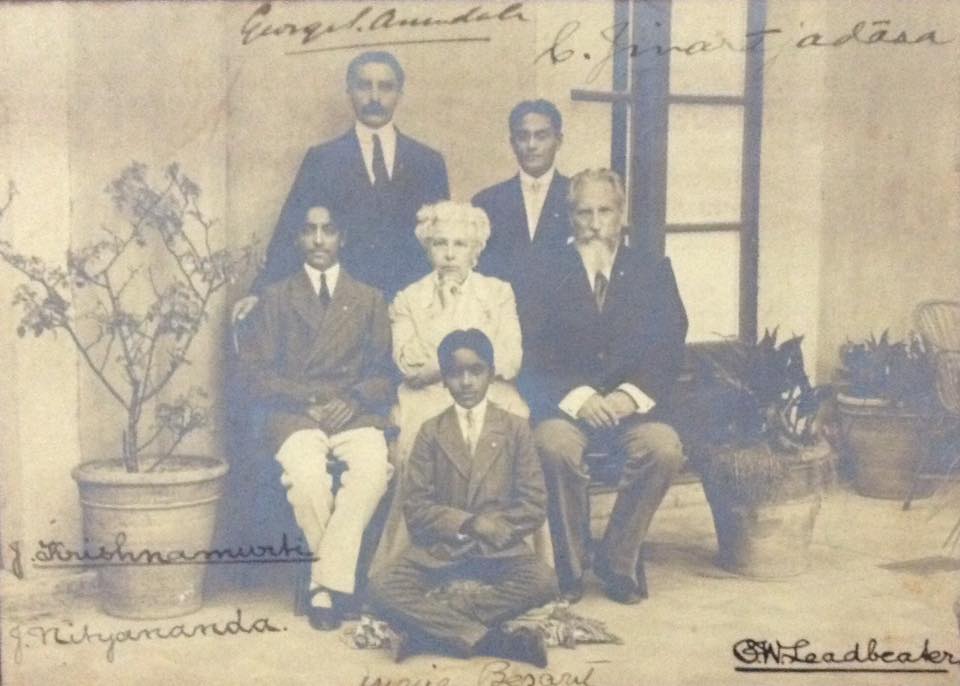
As a species, we are pattern recognizers and this has been an essential tool for our survival. But we also used that technique to create power hubs, establish functionality, enforce selective order and other people. This was executed by the group or individual who sought to grab command. One can speculate that the first such subset among human beings was the male identity. Using physiological differences, they made living central to themselves. The need to enforce power, bundled with pattern recognition, resulted in gender, caste or race-based discrimination. Krishnamurti points at pattern recognition (judgement) and power/fear as the fundamentals to our unfree-ness. But judgement or power can never be removed in permanence. Krishnamurti acknowledges this, constantly speaking of a state of acute awareness. But what are we observing? Fear does not exist in abstraction; it is felt only because of the enabling verb and adjective that gives it temporality and makes it real. Without verbs and adjectives that give it character in each context, fear is non-existent. And what is fear without the body? The physical is central to experience and no philosophical investigation can afford to ignore this and assume a high ground by only pondering over the intangibles. Fear, power, judgement — in fact every quality Krishnamurti challenges — lives in, between and among people. Without people and identities, they do not exist. Seeking to separate emotional states and actions from the reality of their existence and confirming that elusive meta-issue is intellectual jugglery.
[W]e cannot brush aside the truth that, in spite of religion, there are individuals who, moved by faith, shed all pre-imposed impressions and become free.
If we were to accept the defence that Krishnamurti was only dealing with ‘real’ struggles, there is still one anomaly. Why did Krishnamurti spend so much time debunking and castigating religion? He never held back. Religion is, without doubt, a super-structure. To begin with, religion uses social demarcations to establish itself. But later it becomes the justifier, practitioner and defender of social parochialism. If power dynamics within a religion change, accommodations are made but the system is never annihilated. For religion and its associated observances to thrive, social discrimination is a pre-requisite. Yet religion remained a perpetual pre-occupation for Krishnamurti; the human premise was short-changed.
Krishnamurti consistently broke down the ivory towers of religious fiefdoms. But he also gave no space for faith in his enquiry. He sought independence from any structure of dependence, hence he had no room for religion, but why not faith? Faith is an intimate experience; one that can open the room of selflessness concealed within. I am aware that the structures that govern faith are restrictive and narrowing, yet we must recognize the distinct enabling capacity of faith. There is the possibility that the environment of faith can remove, even if temporarily, the walls and blocks that inhibits the individual from embracing life. This freedom, uncoloured by habit and presumption, can open the doors to a realization. The ‘self’ vanishes and an understanding of the universal appears. This unburdened moment is an awakening. Krishnamurti refused to engage with this chance. He felt religion did not and would not permit this happening. As true as that is, we cannot brush aside the truth that, in spite of religion, there are individuals who, moved by faith, shed all pre-imposed impressions and become free. There is hope in faith.
Krishnamurti’s avoidance of the social influenced his listeners and readers. Some philosophically undervalue socio-political action. Activism, as it is called, is seen as only addressing the superficial; the actuals, according to them, are hidden. They continue to practice an enquiry that is empty, filled with jargons and cliches. Only when the social and the individualistic are meshed in a Krishnamurti-like conversation is there nowhere to hide. When social realities are not factored in, in the manner they should be, what can be observed? Reactions and responses become the point of conversation. Observing them becomes central, and that demolishes the entire process of self-enquiry. The root condition remains intact and people delude themselves that they are observers.
Krishnamurti spoke of the perpetrator, the silent observer, and even the unaware individual. What about the victim and survivor?
This takes us back to the identity of the speaker and his audience. It would not be incorrect to say that Krishnamurti’s audience was people of similar caste, class or racial privilege. I am not discounting the many from other sections of society who were and have been influenced by him; nevertheless, the previous statement stands largely true. Krishnamurti was speaking and writing for people who were more or less like him. This meant that no one in the ‘K community’ had been targets of violence (non-physical or physical) for just being who they were. I am not even remotely suggesting that Krishnamurti needed to have experienced such violence to address it, but it shows a lack of humility when he does not acknowledge that fact. There was no effort on his part to immerse himself in diverse social cultures and bring greater nuance into his vision.
The commonality in the environment that he occupied meant that his discussions on subjects such as fear and anger were not informed by environments where anger and fear exist overtly, every day, and are thrust upon the people. Right from when a child is born, caste violence is unleashed. Hate and fear is the bedrock on which this child becomes an adult. Self-awareness is based on these ugly fundamentals that society lays out. Krishnamurti spoke of the perpetrator, the silent observer, and even the unaware individual. What about the victim and survivor? There was a need for a different language to address this context, not the one Krishnamurti used. All anger and hate cannot be equalized. Anger in everyone is evoked from the same well of feeling, triggered and established by the same systems, but they are not all equal. There needs to be equity in the understanding. This was missing in Krishnamurti’s discourse.
Krishnamurti was an unusual philosopher. He asked listeners to trust themselves and saw his role as an enabler who gave us the tools needed for such an enquiry. His was an unforgiving, support-less path; one that demanded that each one of us surrender to ourselves in our entirety. Anything less was a waste of time. Every question I have posed in this essay comes from exactly that place. When I ask myself questions, I am unable to detach the presumption of identity and inequality that is embedded in the questions themselves. Some of you may feel I am thrusting upon Krishnamurti my own philosophical musings. I am only exacting a larger, inclusive canvas from him. His conversations need to cross that threshold because their essentiality is unquestionable. May be, the way forward for us is to bring Jiddu Krishnamurti in confluence with Babasaheb Ambedkar and Sree Narayana Guru. In this coming together nothing — social, political, philosophical or economic — will escape.



